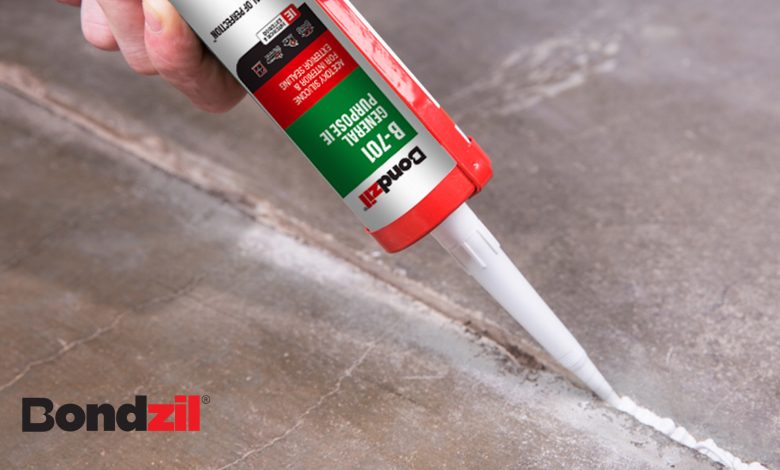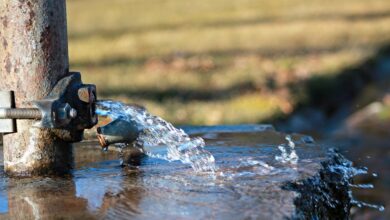Your Handy DIY Guide for Balcony Waterproofing

Last Updated on January 10, 2024 by Umer Malikk
Considered using silicon sealant for waterproofing your balcony? Still in dilemma about it? Looking for the procedure for applying it? Then you are at the right place, as this blog will pop all your doubt bubbles regarding waterproofing your balcony.
Most people just adore the balcony space of their house. After all, a balcony is like a haven suspended in the open air, providing an escape from the confines of indoor living. It’s a space to savor morning coffees, indulge in sunsets, and experience the soothing breeze of the outdoors.
But, with great exposure to the elements comes the responsibility of maintenance. Balconies are particularly vulnerable to water damage due to their constant exposure to rain, wind, and changing temperatures.
Without proper protection, your cherished balcony space can quickly turn into a source of headaches and costly repairs. This is where balcony waterproofing enters the picture, and by following a few simple steps using silicone sealant for water proofing, you can shield your favorite corner of your house from damage.
The Importance of Balcony Waterproofing
when it comes to balconies, water damage is a common enemy – which can fortunately be resolved with a Hicksville water damage restoration company.
Many might overlook this concern of waterproofing the balcony. We all are aware that Water is capable of seeping into the tiniest crevices and wreaking havoc. And when it comes to balconies, water damage is a common enemy. Unchecked moisture infiltration can lead to a host of issues, such as cracks, leaks, and even structural deterioration.
Over time, these problems can compromise the integrity of your balcony, weaken its foundation, and eventually infiltrate your living space, causing even more extensive damage. To prevent these nightmare scenarios, balcony waterproofing is not just a suggestion – it’s an essential task to prolong the life of your cherished outdoor space.
Steps for Applying Sealant and Coating on Balcony
Balcony waterproofing might look like a daunting task, but with the right approach, instructions, and materials, it can be a manageable DIY project. Here’s a step-by-step guide to help you successfully apply sealant and coating to your balcony:
For a precautionary measure: Have a weather check
Keep in mind that even after the waterproofing is done, it would take another 24-48 hours for the silicone sealant for balcony to dry up. So if you see any chance of rain, it is better to wait for clouds to clear. And once the weather is appropriate, just follow these steps.
Step 1: Prepare the Surface
Start by thoroughly cleaning the balcony surface. Remove any debris, dirt, or loose materials. Pay special attention to the corners and edges where moisture tends to accumulate.
Step 2: Repair Cracks and Damage
Inspect the balcony for any cracks, gaps, or holes. Fill these imperfections with an appropriate filler and allow it to dry. Repairing cracks is crucial for waterproofing as it ensures a smooth and even surface for applying the sealant.
Step 3: Choose the Right Sealant
When it comes to balcony waterproofing, not all sealants are created equal. Silicone sealant for water proofing is the best choice due to its water-resistant properties. Moreover, they have flexibility and durability, which makes silicone sealant for water proofing the best choice. It adheres well to various surfaces and can withstand the expansion and contraction caused by temperature changes.
Step 4: Apply the Sealant
Using a caulking gun, apply the silicone sealant to all vulnerable areas, such as joints, corners, and connections between different materials. Make sure to work carefully to create a continuous and uniform seal. Silicone sealants are easy to work with, allowing for smooth application. You can also use silicone sealant for tiles, helping them a stronger bond.
Step 5: Use a Waterproof Coating
After the sealant has dried, apply a waterproof coating to the entire balcony surface. This coating acts as an additional layer of protection, safeguarding your balcony against water infiltration and UV damage. Choose a coating that is compatible with the sealant you’ve used.
Step 6: Allow for Proper Drying Time
Allow the sealant and coating ample time to dry and cure according to the manufacturer’s recommendations. Rushing this process can compromise the effectiveness of your waterproofing efforts. So, keep in mind patience is the key to this step.
Step 7: Regular Maintenance
Even after completing the waterproofing process, it’s important to conduct regular inspections and touch-ups as needed. Over time, weather conditions and wear can impact the integrity of the sealant and coating. By addressing issues promptly, you can prevent minor problems from escalating into major repairs.
Why Silicone Sealant Is the Best Solution
There are ample sealants, but silicone stands out as the best choice for numerous reasons. Here’s why you should use silicone sealant for balcony waterproofing:
1. Exceptional Water-resistance Properties: Silicone is renowned for its outstanding water-resistance capabilities. It prevents water from seeping into joints and crevices, effectively protecting your balcony from moisture damage.
2. Flexibility: Balconies are exposed to temperature fluctuations, causing materials to expand and contract. Silicone sealants are highly flexible, accommodating these movements without losing their effectiveness.
3. Durability: Silicone is resistant to UV radiation, extreme temperatures, and harsh weather conditions. This durability ensures that your balcony remains protected for years to come, reducing the need for frequent reapplication.
4. Easy Application: Silicone sealants are easy to work with, making them a popular choice for DIY enthusiasts. They can be applied smoothly and precisely, ensuring a seamless and effective seal.
5. Adhesion: Silicone adheres well to various surfaces, including concrete, metal, glass, and wood. This versatility allows you to use it for different types of balconies and materials.
6. Minimal Maintenance: Once properly applied, silicone sealant requires minimal maintenance. Its long-lasting performance means fewer worries about reapplying sealant frequently.
The Parting Note
Your balcony is an extension of your living space and maybe your favorite place in your house. By following the steps outlined above and choosing the right materials, such as Bondzil silicone sealant, you can effectively shield your balcony from the damaging effects of moisture.



